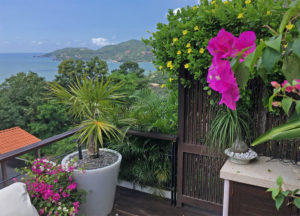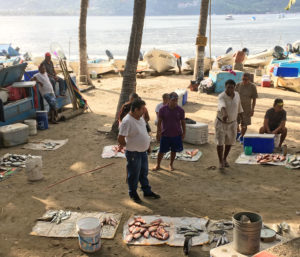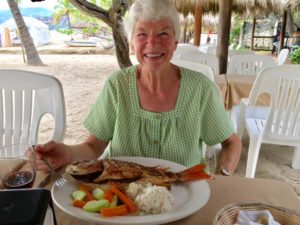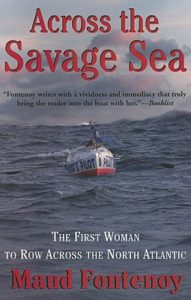
View from our condo deck
We recently spent a memorable vacation in Zihuatanejo, Mexico. Zihuatanejo (pronounced see-whah-tah-NEH-ho), the fourth-largest city in the Mexican state of Guerrero, is located on the Pacific Coast, about 150 miles northwest of Acapulco.
Perched on a lush hillside above La Ropa Beach, Ensueño 10, the six-unit condo where we stayed, is beautifully furnished with a great view of the bay. Playa la Ropa (“clothes beach”) was named for a Spanish galleon’s cargo of silks and fabrics brought from the Orient and scattered here from a shipwreck. The condo’s private deck, with an assortment of comfortable outdoor furniture and loungers, served as our headquarters as we planned our activities, read, and ate meals we prepared for ourselves. From our condo we relished in magnificent views of surrounding green hills, and watched the many water sports on the bay: skiing, parachute gliding, boogie boards, and jet skiing. Water taxis sailed between the town pier and idyllic Playa las Gatas.
Although the hills are steep, from our condo we could walk to the beach and stroll along sparkling white sand, passing luxurious hotels, restaurants, and gift shops. Sometimes we choose to hike back up the hill to our condo; sometimes we took a taxi, which proved to be an inexpensive mode of transportation.
On such a vacation, we usually prefer to have some of our meals “in” and we found groceries in Zihautanejo readily available and inexpensive. The kitchen in our condo had all the necessary equipment needed to manage meals with a minimum of hassle.

Fishermen display their day’s catch
Taking a taxi, we rode into town to check out the fishing village. We watched as fishermen brought in and displayed their day’s catch. From there we strolled along a walkway with condos and hotels on one side and the sea on the other. In the sea, a young fisherman, waist-deep in water, threw his circular fishing net. Along the way, we stopped for a delightful lunch at one of the waterfront restaurants.
Another day we strolled among Zihautanejo’s cobblestone streets and visited shops nestled in nooks and crannies. We admired the vibrant colors of Mexican art, and enjoyed observing the culture, listening to conversations in rapid Spanish with traditional Mexican music in the background. Another day we took a water taxi from the town pier and sailed to Playa las Gatas beach. On the small strip of land between the densely forested hill and white-sand beach, restaurants and bars serve meals and drinks; little gift stands feature swimwear and water toys.
Late September and October aren’t usually considered ideal tourist season in this part of Mexico, and we did find it hot and humid, but the upside was that the place wasn’t crowded with tourists and, in fact, we had the condo pool to ourselves. We spent many a happy hour luxuriating in the salt-water infinity pool and reading at the pool-area’s shaded cabana. Although at times it did rain during the night, weather wasn’t a deterrent to our enjoyment.

Enjoying dinner at a beach restaurant
All in all, our time in Zihautanejo was a memorable vacation. We found plenty to do at the pace we wanted to do it. But there’s plenty of other activities, too, whether you have “champagne taste and a beer budget” or seek luxury, glamour and pampering. Your stay can be a tranquil rustic retreat, or more lively with sport activities such as golf, tennis, sport fishing, scuba diving or horseback riding. You’ll find it all in here. Viva Zihautanejo!














